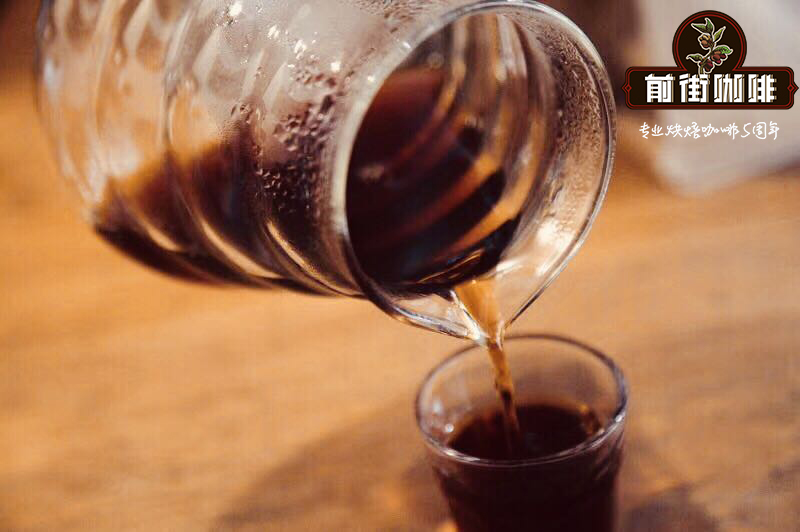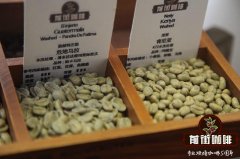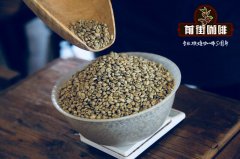Jamaica Blue Mountain Coffee you don't know-World Cultural and Natural Heritage Blue Mountains and John Crowe Mountain

Professional coffee knowledge exchange more coffee bean information please follow the coffee workshop (Wechat official account cafe_style)
Authentic Jamaican Blue Mountain Coffee _ the best Jamaican Blue Mountain Coffee in the World
Blue and John Crow Mountains
Selection time: 2015
Selection basis: cultural Heritage (iii) (vi) Natural Heritage (x)
Location: N18 04 39 W76 34 16
Estate number: 1356rev
Brief introduction:
Jamaica is the third largest island in the Caribbean. The Blue Mountains and the John Crowe Mountains are located in the southeast of Jamaica. The Blue Mountains of Jamaica-the John Crowe Mountains are listed as both natural and cultural heritages because of their anti-colonial cultural and biological diversity. this also makes the world-famous Blue Mountain Coffee from the region have a longer aftertaste.
The Blue Mountains are so named because they are surrounded by the Caribbean Sea, when the sun shines directly on the blue sea on clear days, and the peaks reflect the bright blue light of the sea. The highest peak of the Blue Mountains, which is 2256 meters above sea level, is the highest peak in the Caribbean and a famous tourist attraction. Located in the coffee belt, with fertile volcanic soil, fresh air, no pollution, humid climate, foggy and rainy all the year round (the average precipitation is 1980 mm, the temperature is around 27 degrees), this climate has created the world-famous Jamaican Blue Mountain Coffee and the second most expensive coffee in the world. This kind of coffee has the characteristics of all good coffee, not only full-bodied and mellow, but also because of the perfect combination of sweet, sour and bitter coffee, it has no bitter taste at all, only a moderate and perfect sour taste.
The dual cultural and natural heritage of the Blue and John Crowe Mountains includes the Blue Mountains in eastern Jamaica and 26252 hectares of tropical alpine rainforest in the John Crowe Mountains. The two mountains cover about 20% of the total island area and are considered to be representative of biodiversity in the Caribbean. The elevation of the heritage has risen from 850m to 2256 m, surrounded by a buffer zone of about 28494 hectares. High elevations, rugged landscapes and north-south slopes of the mountains form a variety of ecological types of nine ecological communities in the alpine forests of the Blue Mountains (over 1000 m) and the John Crowe Mountains (over 600m), including a unique Morich Mountain forest characterized by pineapple plants growing in deep acidic humus and many endangered tree species. More than 1800 meters, the vegetation of the Blue Mountain is more dwarfed, and the growth of some species is limited to this height. The forest above 2000 meters is called elf forest because the trees are underdeveloped and rough, and the surface is covered with epiphytic moss, ferns and small orchids.
The Blue and John Crowe Mountains Heritage is one of the 78 most irreplaceable protected areas for the protection of the world's amphibians, birds and mammals within the 200 priority ecological areas of the Jamaican Wetland Forest. In addition, the heritage happens to be located at the centre of plant diversity, including a regional bird sanctuary and two of the five species zero extinction reserves in Jamaica. Within the scope of the heritage, Jamaica has a very high proportion of endemic plant and animal species, which have evolved differently from other continents. In addition, there are some globally endangered species within the heritage, including several frogs and birds, such as the Jamaican blackbird, as well as the last two known butterflies (the largest butterfly in the Western Hemisphere), and Jamaican pythons.
The Blue and John Crowe Mountains are the Malone (formerly enslaved people. The slave trade, mainly from Sierra Leone in Africa, has led to one uprising after another as a result of cruel treatment, and even set up some independent settlements in the mountains (known as the Malone) to provide refuge, thus preserving the tangible cultural heritage related to the stories of the Malone people. These legacies include settlements, trails, lookouts, hideouts, etc., that form the heritage route of the town of Nanny. Forests and their rich natural resources provide everything the Malone people need to survive and struggle for freedom and nurture their culture. The Malone community still maintains a strong spiritual connection with these mountains and is expressed through special and invisible forms of expression.
Evaluation of the World Heritage Committee:
Located in the mountains of southeastern Jamaica, the site, with lush jungles and rugged roads, once provided a refuge for fugitive slaves, initially mainly indigenous Tino and later African slaves. They rebelled against the European colonial system by building a network of paths, hideouts and settlements in this isolated area, which became the heritage of the town of Nancy. The forest provided the slaves with all the necessities for survival. They have established a strong spiritual connection with the mountains, which we can still see today in intangible cultural heritages such as religious rituals, traditional medicine and dance. The site is also a hot spot for biodiversity in the Caribbean islands, where many plants are unique, especially lichens, moss and some flowering plants.
Why is Blue Mountain coffee so expensive? are we drinking the real Blue Mountain?
Important Notice :
前街咖啡 FrontStreet Coffee has moved to new addredd:
FrontStreet Coffee Address: 315,Donghua East Road,GuangZhou
Tel:020 38364473
- Prev

How do the grading conditions of Jamaican Blue Mountain Coffee determine Jamaican Coffee outside the statutory Blue Mountain area
Professional coffee knowledge exchange more coffee bean information please follow Coffee Workshop (Wechat official account cafe_style) authentic Jamaican Blue Mountain Coffee _ the world's best Jamaican Blue Mountain Coffee beans are planted under Jamaican official law and the production process is under the strict supervision of the Jamaican Coffee Bureau. High-quality blue mountain coffee beans are balanced and gentle
- Next

Coffee fans must not know! Legendary Coffee Story of Arabica and Robusta
Professional coffee knowledge exchange more coffee bean information please follow the coffee workshop (Wechat official account cafe_style) Robusta coffee flavor description characteristics of grinding characteristics of fine coffee varieties of coffee taste price introduction [the birth of coffee beans] coffee fans must know! The legendary Coffee Story of Arabica and Robusta who likes coffee have you ever thought about the origin of coffee? It turns out that Elaraby
Related
- Detailed explanation of Jadeite planting Land in Panamanian Jadeite Manor introduction to the grading system of Jadeite competitive bidding, Red bid, Green bid and Rose Summer
- Story of Coffee planting in Brenka region of Costa Rica Stonehenge Manor anaerobic heavy honey treatment of flavor mouth
- What's on the barrel of Blue Mountain Coffee beans?
- Can American coffee also pull flowers? How to use hot American style to pull out a good-looking pattern?
- Can you make a cold extract with coffee beans? What is the right proportion for cold-extracted coffee formula?
- Indonesian PWN Gold Mandrine Coffee Origin Features Flavor How to Chong? Mandolin coffee is American.
- A brief introduction to the flavor characteristics of Brazilian yellow bourbon coffee beans
- What is the effect of different water quality on the flavor of cold-extracted coffee? What kind of water is best for brewing coffee?
- Why do you think of Rose Summer whenever you mention Panamanian coffee?
- Introduction to the characteristics of authentic blue mountain coffee bean producing areas? What is the CIB Coffee Authority in Jamaica?

